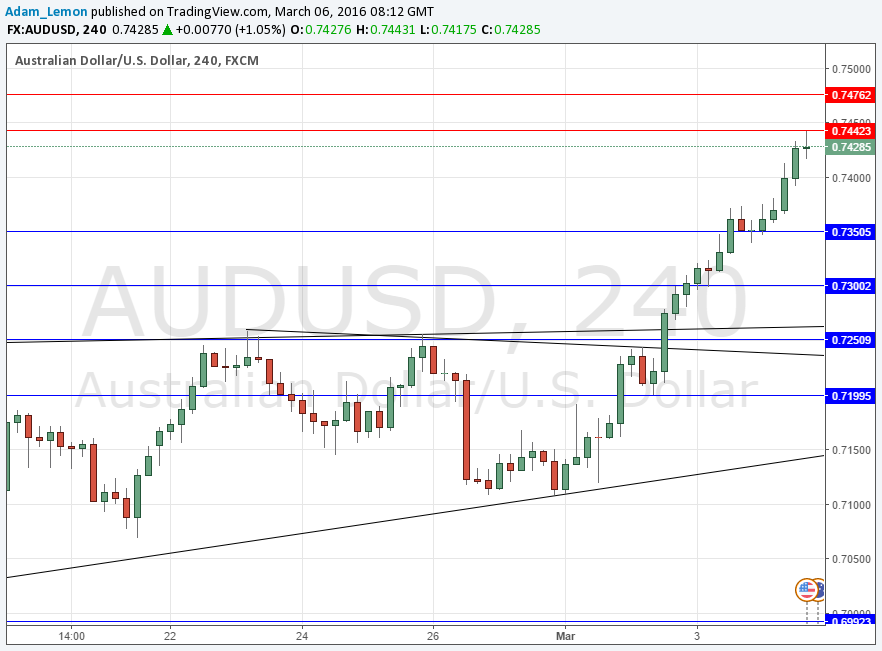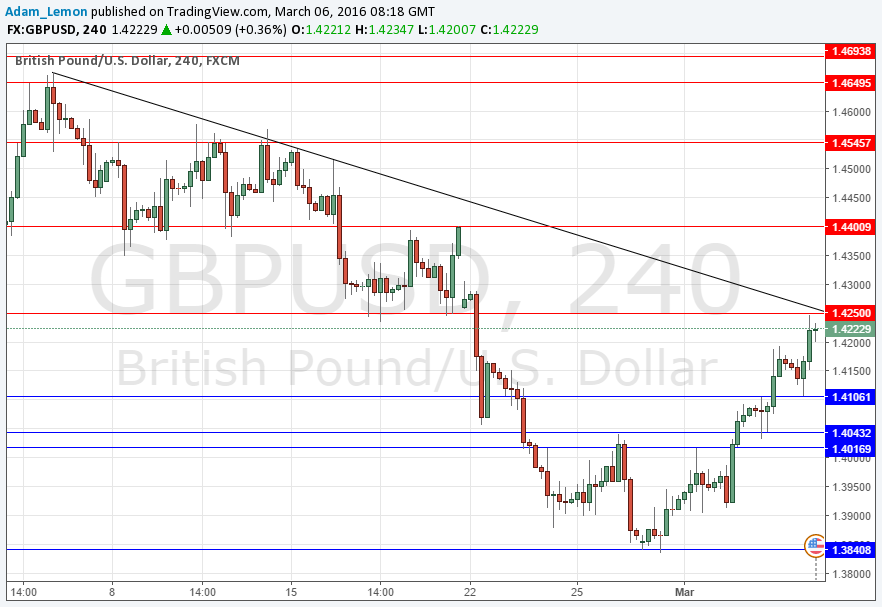The difference between success and failure in Forex trading is very likely to depend upon which currency pairs you choose to trade each week, and not on the exact trading methods you might use to determine trade entries and exits. Each week I am going to analyze fundamentals, sentiment and technical positions in order to determine which currency pairs are most likely to produce the easiest and most profitable trading opportunities over the next week. In some cases it will be trading the trend. In other cases it will be trading support and resistance levels during more ranging markets.
Big Picture 6th March 2016
Last week I highlighted short GBP/USD and short USD/JPY from 144.50. Short GBP/USD did not work out well at all, but the USD/JPY pair did fall from its peak of 114.55 by about 130 pips at maximum, so that did provide a good swing trading opportunity.
Fundamental Analysis & Market Sentiment
The stand out case where fundamental analysis and sentiment can be applied at the current time is the British Pound. Britain will be voting in June on a referendum on exiting the European Union. If Britain votes to leave – and that is a realistic prospect – it could call the entire future of the European project into question. Several senior politicians have come out in favor of exit, and at the same time the central bank has been revising its economic projections downwards and hinting at a delay in any possible future tightening of monetary policy. Taken together, these factors produce an excellent case for selling the British Pound. However, although opinion polls have been showing the “leave” and “remain camps neck and neck, fundamentals seem to be playing no role in the recent rise in the Pound, but rather a feeling that the currency is at a historical low which represents excellent value as a buying opportunity.
Sentiment shifted this week quite decisively from risk-off to risk-on. This has impacted the Japanese Yen, which had been the ultimate safe haven currency and which is now tending to fall as money flows out of safety and into risk.
Although last week’s headline Non-Farm Payroll data was very positive, the Average Hourly Wage data was poor, and the U.S. Dollar fell everywhere.
Fundamental analysis is not very useful in explaining recent market moves. What seems to be the key driver is rather the recovery in global equities, oil and general risk sentiment, and the Dollar has fallen most against risk currencies.
Technical Analysis
AUD/USD
This pair has been stuck in a range for several months, but in recent weeks had been slowly edging higher. Finally last week it broke strongly up out of this range, closing above the key 6 month high at 0.7381.
It makes good sense to be looking for long trades here, especially following any pullbacks to 0.7381, 0.7350, 0.7300 or 0.7260.
GBP/USD
This pair reversed and recovered very strongly last week, moving powerfully against its long-term downwards trend. Due to the strength of this move it is dangerous to fade it, but the price on Friday reached just a few pips short of what should be extremely key resistance at the strong psychological level of 1.4250. We also have confluence there will a fairly long-term bearish trend line. A bearish reversal off this level, especially with a double top formation, ideally with divergence, could be a profitable short trade, but caution should be exercised.
The safest trade of the week is probably going to be long AUD/USD.



